

Assignment 3
by
Allison McNeece
For this assignment we will be examining the graphs of:

for multiple values of a,b, and c.
For our first exploration let's allow a to vary from -5 to 5 and keep b and c fixed at 1.
|
|
Observations?
Next let b vary from -5 to 5 and let a and c be fixed at 1
|
|
Observations?
And finally let c vary from -5 to 5 but a and b remain fixed at 1
|
|
Observations?
Graphing in the xb plane
Let's go back to the discussion of the roots of:
+xb+1=0.png)
The graph for (x^2)+bx+1=y for values of b ranging from -5 to 5 looked like this:
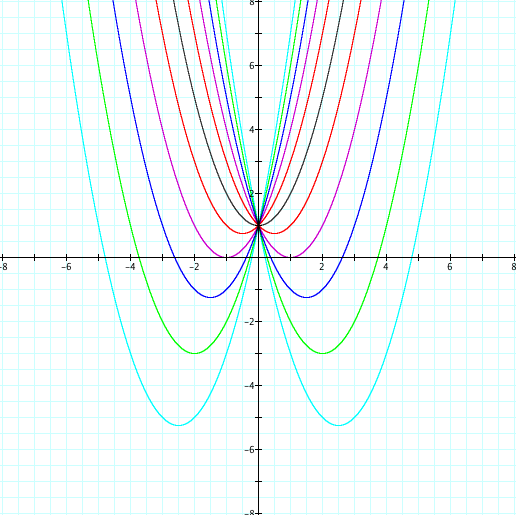
But what if we spun this whole thing on its head and graphed the equation in the xb plane instead of the xy plane?
Graphing the equation in the xb plane give us:
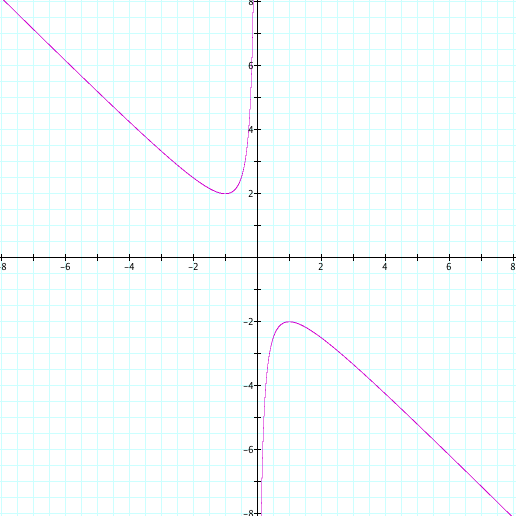
If we then graph any particular value of b, say b=5, we get a line parallel to the x-axis. Where this line intersects the graph of (x^2)+bx+1=0 we find the root values for that particular value of b.
See below for an example.

Let's look at the graphs in the xb plane with b equaling -5 to 5
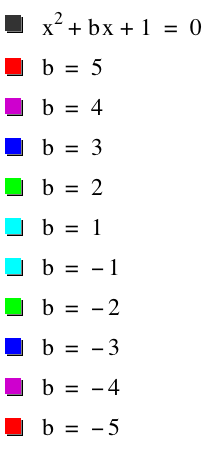 |
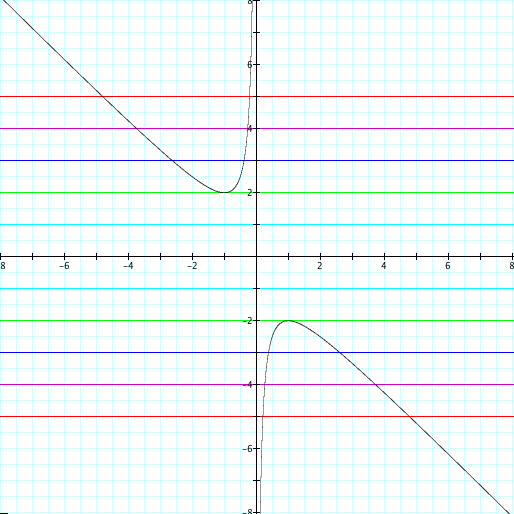 |
From this graph it becomes clear that when b > 2 the equation (x^2)+bx+1=0 has two real positive roots and when b < -2 the equation has two negative real roots. For b=2 there is one positive real root and when b= -2 there is one negative real root. There are no real roots when -2 < b < 2.
What if we changed the value of c?
Recall the graph of (x^2)+bx+c=0 with b=1 and c varying from -5 to 5 in the xy plane:
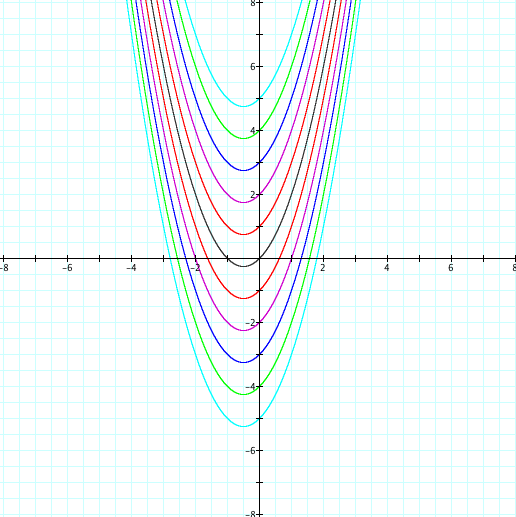
From the above graph what do you imagine the roots are for the equation (x^2)+x-3 = 0 are?
Let's graph (x^2)+bx-3=0 and the line b=1 in the xb plane:
 |
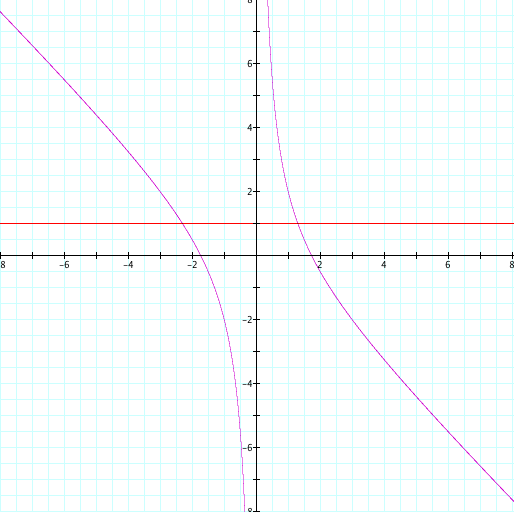 |
|---|
As you can see there are two real roots.
But if we change the equation to (x^2)+bx+3=0?
 |
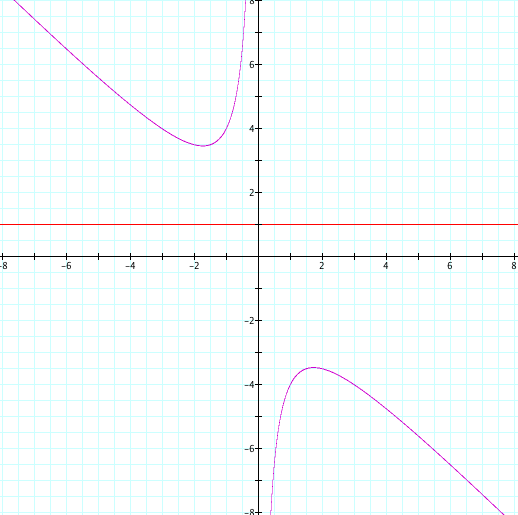 |
|---|
This shows us that there are no real roots for this equation.
Try on your own other values for c and b in the xb plane.